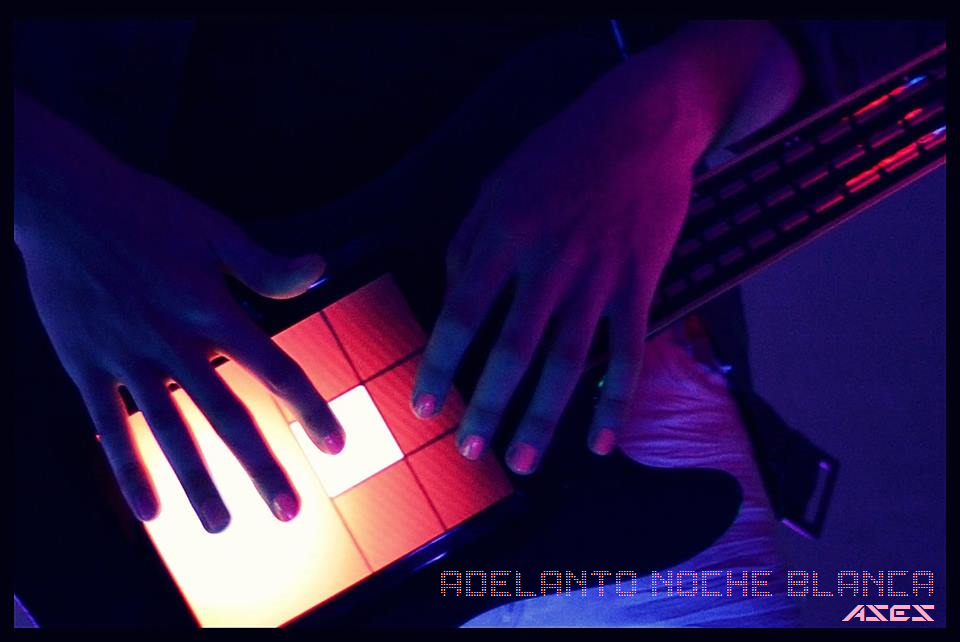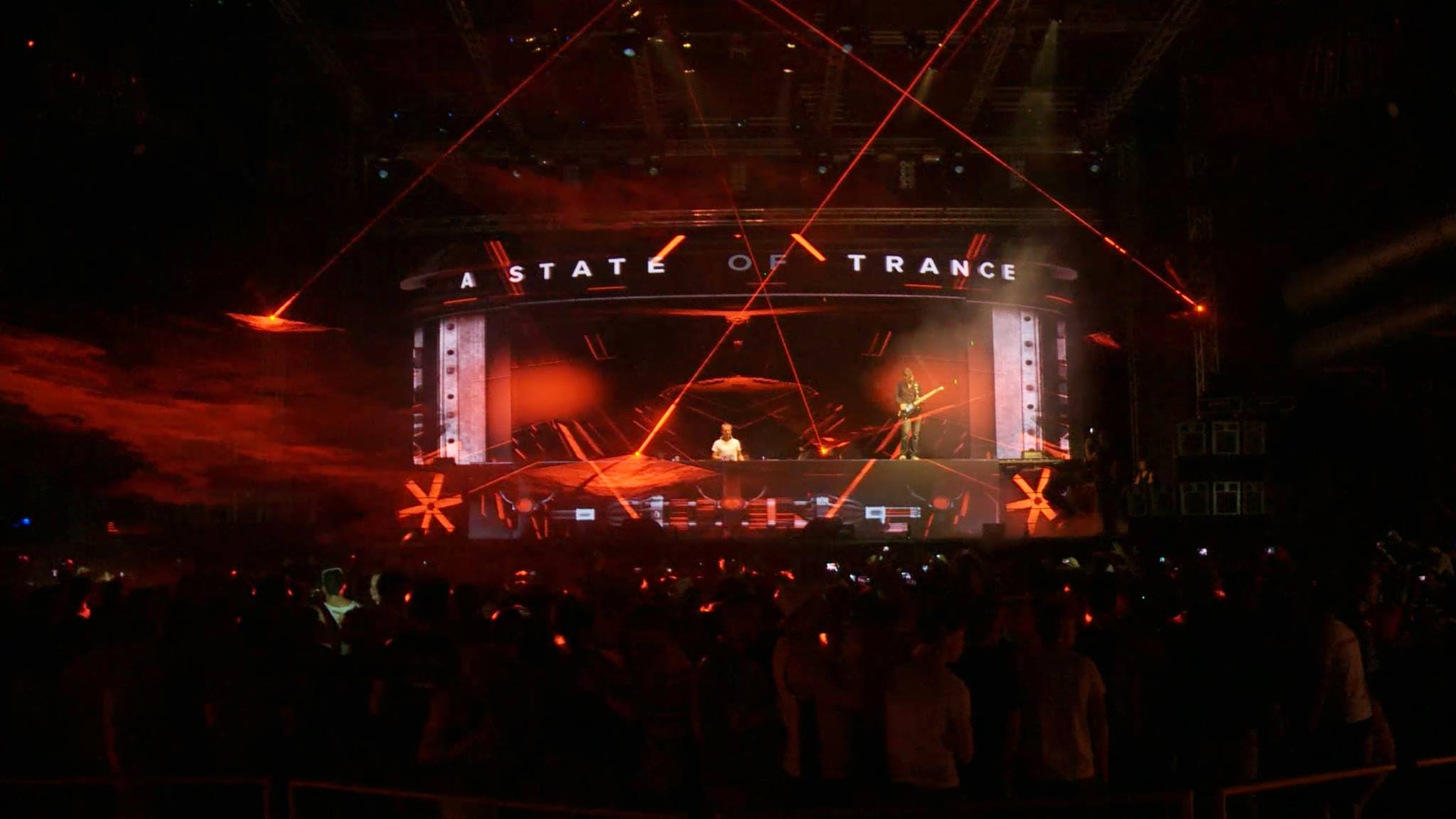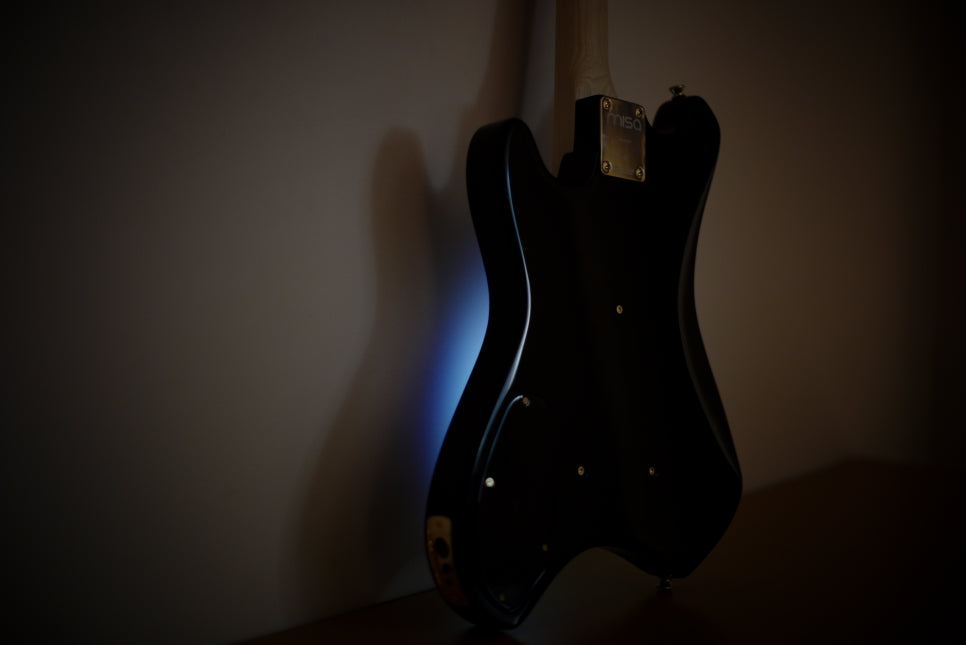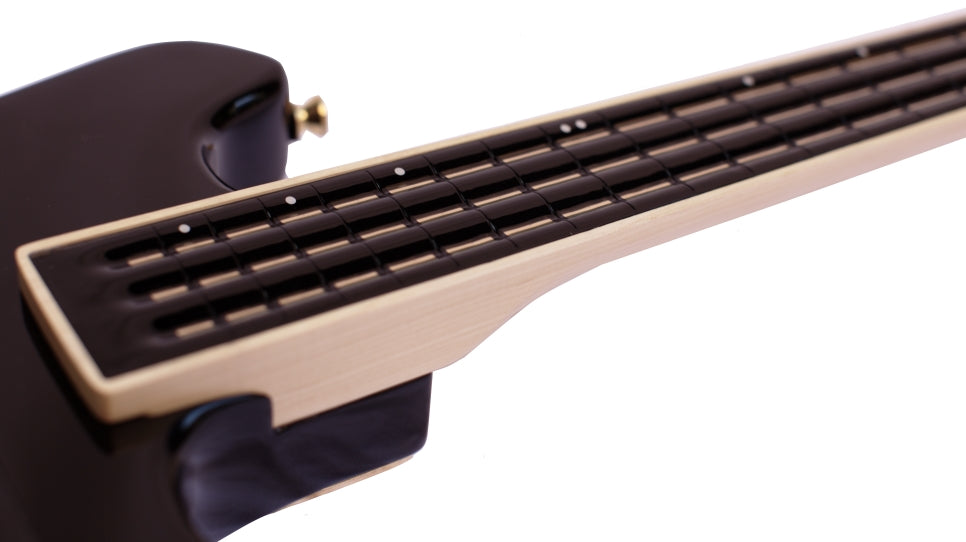




tri-bass
NO LONGER IN PRODUCTION SINCE 2013
The Misa Tri-Bass is a MIDI controller. It makes no sound of its own, so you need to connect it to a sound generator (like a synthesizer, or a computer). It has two main parts:
- touch sensitive neck
- touch screen
Reference Manual and Downloads
WHAT IS INCLUDED: One Misa Tri-Bass with internal rechargeable battery, power adapter, MIDI cable, MIDI-to-USB cable.
The tri-bass has been designed specifically for tomorrow's electronic music. Although it looks like a guitar, and has a name like a bass guitar, it is played like neither. The tri-bass design is pretty far removed from traditional guitar, even more so than the original misa kitara. Partly this is to try and break any assumptions people may have of digital guitar style instruments; mostly though, it's to make the instrument fit perfectly in a modern electronic music setting. So with that out of the way, let me break down the core elements of the design.
The neck is touch sensitive to encourage sliding along the neck. In fact, that's what it's all about. There are no push buttons. This is to stop the bad sound of amplitude and filter envelopes restarting, something that happens when trying to slide across an array of push buttons. When you set your synth to glide, this neck design will make sure it sounds better than anything. The fingerboard is wave shaped with channels to lock the finger to the sensor area. This is mainly to provide the tactile information a player needs about their hand position.
The tri-bass has three "strings" only - six strings are unnecessary. YES I know that's a controversial statement to make. But after learning how other people were using the misa kitara, understanding their expectations as "digital guitarists" and most importantly seeing the workflow and processes others are currently using to produce modern electronic music, I knew it was the right decision to make. One note alone through a synthesizer can be enough to completely cut through any mix and provide enough tonal information to sound like bliss (if you're doing it right). Do you really need six? (And this is not to sacrifice musicality, because the multi-channel nature of the instrument - see below - more than makes up for it.) Too many times people have picked up a kitara and tried to play a barre chord. It's not really right. These sorts of six string chords are just not important for what the tri-bass is trying to achieve. The design is a reminder that the tri-bass is not meant to sound like a guitar, and it forces the user to adapt their playing style to a new electronic form. The other reason for the low string count is that three widely spaced strings allows me to do interesting things with the layout as I have more space. The result is to make playing much more comfortable and enjoyable, especially live and in dim light conditions.
The tri-bass body and neck are solid wood just as an electric guitar is. The maple neck feels really comfortable to play. This is my favourite part of the design because I think this, coupled with the embedded electronics, provide that perfect balance between traditional and futuristic forms. There is something special about combining old materials with new ones, even though it can be an engineering nightmare.
The tri-bass is a controller only and does not have an on-board synthesizer. State of the art software synthesizers are freely available to generate sound and musicians rarely limit themselves to one synth only. I want to leave the option open to the players to choose sounds based on their own taste, rather than being stuck with something provided on the hardware. Furthermore, most synthesizers are highly configurable. So my aim has been to give the tri-bass no configuration options at all, to prevent the requirement of configuration at two ends which is messy, especially when sharing presets. A minimalistic interface with configurability at the sound module end is most effective.
Perhaps the coolest element of the tri-bass is that it is multi-channel by default. The screen lets you control multiple synths or sounds simultaneously. You can mix different sounds together just by touching different parts of the screen.
In summary, the misa tri-bass is a solid, robust and stage-worthy product that has had a lot of thought go in to the design, and a lot of work go in to the engineering.
Pairs well with
If you have any questions, you are always welcome to contact us. We'll get back to you as soon as possible, within 24 hours on weekdays.
Shipping Information
Use this text to answer questions in as much detail as possible for your customers.
Customer Support
Use this text to answer questions in as much detail as possible for your customers.
FAQ’s
Use this text to answer questions in as much detail as possible for your customers.
Contact Us
Use this text to answer questions in as much detail as possible for your customers.
